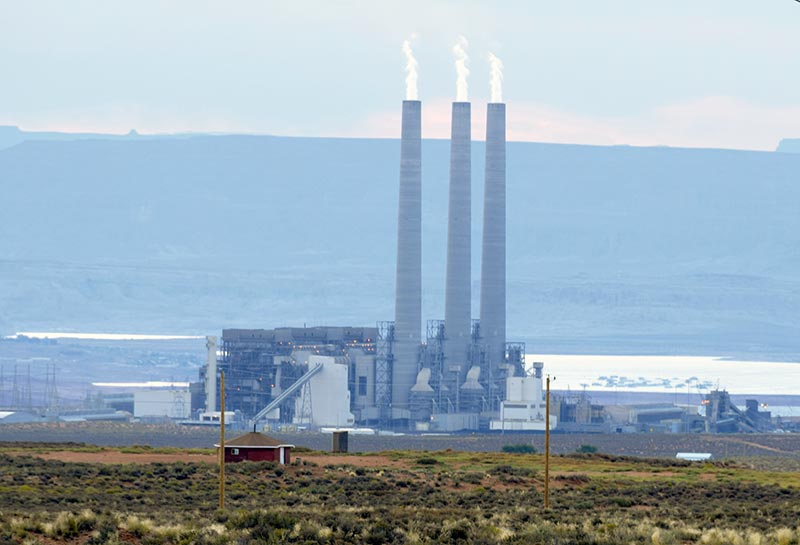
NGS smokestacks cast long shadow over 2017

Navajo Times | File The impending closure, two decades ahead of schedule, of the Navajo Generating Station was the story of the year for the Navajo Times.

Navajo Times | File
The impending closure, two decades ahead of schedule, of the Navajo Generating Station was the story of the year for the Navajo Times.
WINDOW ROCK
Twenty-seventeen was a year of staggering change and uncertainty, as an institution that had been propping up the Navajo Nation’s economy for 41 years threatened to close and tribal leaders tried to predict the effect on Indian Country of a wildly unpredictable new U.S. president.
Heads rolled at Head Start and the Navajo Housing Authority, and the Navajo Nation Council tried unsuccessfully to dislodge the heads of both economic and community development.
And yet, it could have been more staggering. The Council finally and firmly drew the line at building a huge tourist attraction on the rim of the Grand Canyon, and voters nixed an unprecedented grab at the principal of the Permanent Trust Fund.
There was finally some movement on the long-anticipated Amber Alert for the Nation, as the public safety department purchased software that will allow it to get off the ground.
For the small news staff at the Navajo Times, there was no shortage of stories to report. Once again, we were cursed, or blessed, to live in interesting times.
Based on consensus of the editorial staff at the Navajo Times, here are the Top 10 stories of 2017.
1. Navajo Generating Station slated for closure
In February, the owners of the power plant in Page, Arizona, announced their intention to close the plant this December, 25 years ahead of schedule, citing the high cost of coal compared to competing natural gas. As environmentalists celebrated the long-sought demise of the dirty plant and the large strip mine that feeds it, the Nation’s leaders scrambled to keep it open, fearing the loss of a third of the tribe’s revenues and an estimated 3,000 jobs. On Nov. 30, the final signatures were obtained on a lease extension that will keep the plant running until the end of 2019, after which it will be slowly decommissioned. Environmental groups are urging the tribe to take over the plant’s infrastructure and convert it to a solar facility, something the U.S. Bureau of Reclamation says is feasible.
2. Bears Ears, celebrated, decimated
The new year opened with an extra celebration for the proponents of a new national monument in southern Utah, which Barack Obama decreed in the waning days of his presidency. But the victory was short-lived. Rumors immediately began circulating that the new president would try to undo the action, and on Dec. 4, less than a year after Bears Ears was established, conservationists’ worst fears were realized. Well, maybe not worst – the monument is still there, but far diminished and divided into two much smaller parcels: Shash Jaa and Indian Creek. A coalition of tribes who hold the land sacred immediately filed suit, saying President Donald Trump’s action exceeds his authority under the U.S. Constitution and the Antiquities Act. Stay tuned.
3. NHA board, CEO ousted
After a scathing series of articles in the Arizona Republic at the end of 2016 alleged the underuse and misuse of millions in federal dollars, President Russell Begaye and Speaker LoRenzo Bates issued a joint letter to the Navajo Housing Authority’s board of directors, asking them to fire CEO Aneva Yazzie. The board balked, stating they thought the Republic articles were way overblown and Yazzie was making good progress. The Council responded by removing and replacing the board, and in June, Yazzie announced her resignation. However, the new board, after investigating the allegations, concluded the Republic series contained a number of errors — a finding substantiated by a later report from the U.S. Department of Housing and Urban Development, which funds the NHA.
To read the full article, pick up your copy of the Navajo Times at your nearest newsstand Thursday mornings!
Are you a digital subscriber? Read the most recent three weeks of stories by logging in to your online account.








 Highway 264,
Highway 264, I-40, WB @ Winslow
I-40, WB @ Winslow